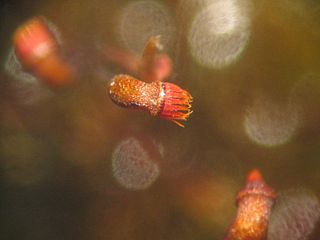
The Bryopsida constitute the largest class of mosses, containing 95% of all moss species. It consists of approximately 11,500 species, common throughout the whole world.

Pottiales is an order of mosses in the subclass Dicranidae.

Bryales is an order of mosses.

Dicranaceae is a family of haplolepideous mosses (Dicranidae) in class Bryopsida. Species within this family are dioicous. Genera in this family include Dicranum, Dicranoloma, and Mitrobryum.

Leucobryaceae is a family of haplolepideous mosses (Dicranidae) in the order Dicranales.
Symphyodontaceae is a moss family in the order Hypnales.
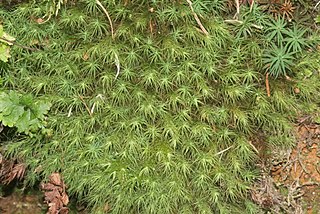
Bartramiales is an order of moss.

Ptychomitriaceae is a family of mosses in the subclass Dicranidae.
Pseudoditrichales is an order of haplolepideous mosses in the subclass Dicranidae. It comprises two families, Pseudoditrichaceae and Chrysoblastellaceae. Pseudoditrichaceae was previously placed in Bryales, while Chrysoblastellaceae is a new family erected for Chrysoblastella, which was previously placed in Ditrichaceae.

Erpodiaceae is a family of haplolepideous mosses in subfamily Dicranidae. It was formerly placed in order Dicranales, but is now placed in its own monotypic order, Erpodiales.
Rhachitheciaceae is a family of haplolepideous mosses in the subfamily Dicranidae. It was formerly placed in the order Dicranales,<ref name=Goffinet-2020-web> but is now placed in order Rhabdoweisiales along with family Rhabdoweisiaceae.

Ditrichaceae is a family of haplolepideous mosses in subclass Dicranidae. The family was previously place in order Dicranales, but it now placed in its own monotypic order, Ditrichales.
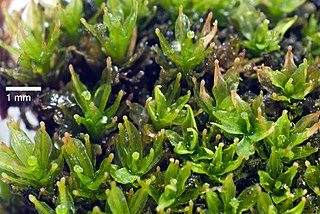
Calymperaceae is a family of haplolepideous mosses (Dicranidae) in the order Dicranales.

Distichium is a genus of haplolepideous mosses (Dicranidae) in the monotypic family Distichiaceae.
Timmiellaceae is a family of haplolepideous mosses (Dicranidae). It contains two genera, Luisierella and Timmiella, that were formerly place in family Pottiaceae.
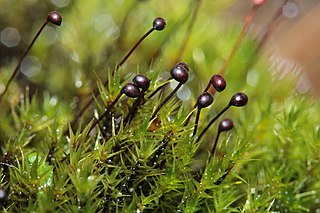
Catoscopium is a genus of haplolepidous mosses (Dicranidae) in the monotypic family Catoscopiaceae .
Micromitrium is a genus of haplolepideous mosses (Dicranidae) in the monotypic family Micromitriaceae . The genus Micrometrium was previously placed in family Pottiaceae in order Pottiales.

Octoblepharum is a genus of haplolepideous mosses (Dicranidae) in the monotypic family Octoblepharaceae . The genus Octoblepharum was previously placed in family Calymperaceae.
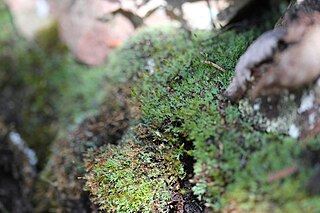
Saelania is a genus of mosses in the monotypic family Saelaniaceae in subclass Dicranidae. The genus was previously placed in family Ditrichaceae. Saelania is named after Finnish botanist Thiodolf Saelan.

Pleurophascum is a genus of haplolepideous mosses (Dicranidae) in the monotypic family Pleurophascaceae. The family was previously place in the order Pottiales, but is not place in its own monotypic order, Pleurophascales.















